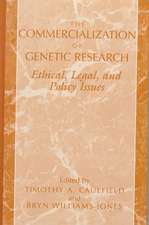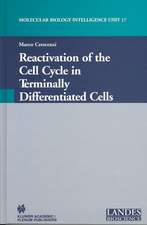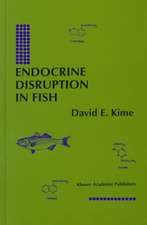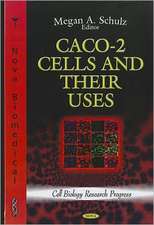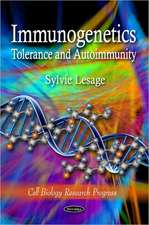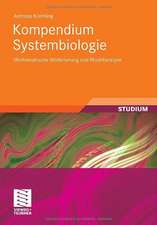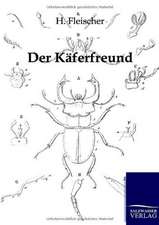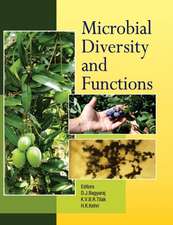Structure-Based Mechanics of Tissues and Organs
Editat de Ghassan S. Kassab, Michael S. Sacksen Limba Engleză Hardback – 29 ian 2016
This book also:
Provides a comprehensive view of tissue modeling across multiple systems
Broadens readers’ understanding of state-of-the-art computational modeling and optical measurements of tissue/cells structures
Describes in detail fiber scale properties such as orientation and crimp
| Toate formatele și edițiile | Preț | Express |
|---|---|---|
| Paperback (1) | 798.81 lei 38-45 zile | |
| Springer Us – 30 mar 2018 | 798.81 lei 38-45 zile | |
| Hardback (1) | 967.56 lei 3-5 săpt. | |
| Springer Us – 29 ian 2016 | 967.56 lei 3-5 săpt. |
Preț: 967.56 lei
Preț vechi: 1179.96 lei
-18% Nou
Puncte Express: 1451
Preț estimativ în valută:
185.15€ • 197.98$ • 154.37£
185.15€ • 197.98$ • 154.37£
Carte disponibilă
Livrare economică 28 martie-11 aprilie
Preluare comenzi: 021 569.72.76
Specificații
ISBN-13: 9781489976291
ISBN-10: 1489976299
Pagini: 420
Ilustrații: XXXIV, 469 p. 169 illus., 98 illus. in color.
Dimensiuni: 155 x 235 x 32 mm
Greutate: 1.08 kg
Ediția:1st ed. 2016
Editura: Springer Us
Colecția Springer
Locul publicării:New York, NY, United States
ISBN-10: 1489976299
Pagini: 420
Ilustrații: XXXIV, 469 p. 169 illus., 98 illus. in color.
Dimensiuni: 155 x 235 x 32 mm
Greutate: 1.08 kg
Ediția:1st ed. 2016
Editura: Springer Us
Colecția Springer
Locul publicării:New York, NY, United States
Public țintă
ResearchCuprins
Chapter 1 The Influence of Microstructure on Neural Tissue Mechanics.- Chapter 2 Modeling a Collagenous Tissues Using Distributed Fiber Orientations.- Chapter 3 Emergent Behaviors in Cell Mechanics.- Chapter 4 Histomechanical Modeling of the Wall of Abdominal Aortic Aneurysm.- Chapter 5 The Biomechanics of Fat: From Tissue to a Cell Scale.- Chapter 6 Glaucoma and Structure-Based Mechanics of the Lamina Cribrosa at Multiple Scales.- Chapter 7 From Stress-Strain Relations to Formulation of Growth and Remodeling Theories: A Historical Reflection on Microstructurally-Motivated Constitutive Relations.- Chapter 8 Relationship Between Structure and Mechanics for Membranous Tissues.- Chapter 9 Structure-Function Relations in the Coronary Vasculature.- Chapter 10 Biomechanical Basis of Myocardium/Vessel Interaction: Implications for Patho-Physiology and Therapy.- Chapter 11 Microstructure-Based Constitutive Models for Coronary Artery Adventitia.- Chapter 12 Structural-Based Models of Ventricular Myocardium.- Chapter 13 Structure-Based Constitutive Model of Coronary Media.- Chapter 14 Biomechanics of the Cornea and Sclera.- Chapter 15 Mechanical Modeling of Skin.- Chapter 16 Undesirable Anisotropy in a Discrete Fiber Bundle Model of Fibrous Tissues.- Chapter 17 Structural Models as Applied to Engineered Tissue Scaffolds.- Chapter 18 Finite Element Implementation of Structural Models.- Chapter 19 A Microvascular Model in Skeletal Muscle Fascia.- Chapter 20 Network Approaches to the Mechanical Failure of Soft Tissues: Implications for Disease and Tissue Engineering.
Textul de pe ultima copertă
This book portrays the commonality of tissue micro-structure that dictates physiological function in various organs (microstructure-function relation). Tissue and organ models are used to illustrate physiological functions based on microstructure. Fiber scale properties such as orientation and crimp are described in detail. Structurally-based constitutive models are given throughout the book, not only to avoid ambiguities in material characterization, but also to offer insights into the function, structure, and mechanics of tissue components. A statement of future directions of the field is also given, including how advancements, such as state-of-the-art computational modeling and optical measurements of tissue/cells structures, are taking structure-based modeling to the next level.
This book also:
Provides a comprehensive view of tissue modeling across multiple systems
Broadens readers’ understanding of state-of-the-art computational modeling and optical measurements of tissue/cells structures
Describes in detail fiber scale properties such as orientation and crimp
This book also:
Provides a comprehensive view of tissue modeling across multiple systems
Broadens readers’ understanding of state-of-the-art computational modeling and optical measurements of tissue/cells structures
Describes in detail fiber scale properties such as orientation and crimp
Caracteristici
Comprehensive view of tissue modeling across multiple systems Chapters written by top experts in biomechanics and soft-tissue modeling Broadens readers’ understanding of state-of-the-art computational modeling and optical measurements of tissue/cells structures Includes supplementary material: sn.pub/extras



